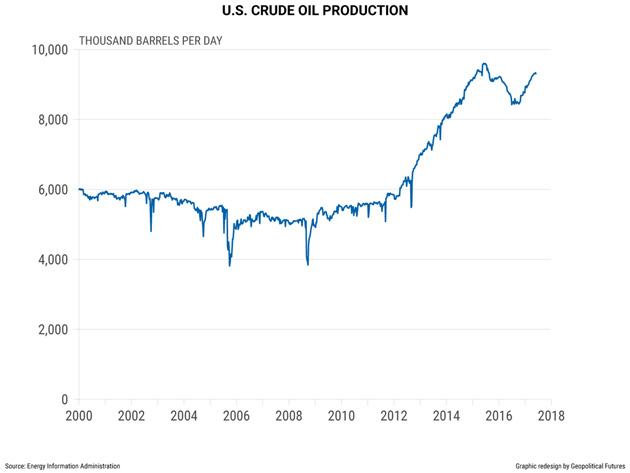There’s no end in sight to slumping oil prices—good news for consumers but a dire development for major oil producers like Saudi Arabia and Russia. And now, rising US oil production and exports are contributing to the slump.
Last week, oil prices reached new lows for 2017, with Brent crude dipping below $48 per barrel and West Texas Intermediate dipping below $46. The drop has been attributed to an unexpected increase in US crude inventories, which rose by 3.3 million barrels last week (according to the US Energy Information Administration), despite expectations that it would drop by 3.5 million barrels.
The rise in production is compounded by rising US oil exports, since the US lifted a 40-year ban on these exports in 2015. This led to modest increases in oil exports in 2016 but substantial increases so far in 2017. This is a key reason prices will remain low in the long term.
Ebbs and Flows in US Exports
It is worth remembering why the United States banned oil exports in 1975 (exceptions were allowed at the discretion of the president). 1970 set a record for the highest crude oil production in the US, though this record will likely be broken in the next two years. The US was producing a lot, but it was also consuming a lot, forcing it to import more from OPEC states, which produced about 55% of the world’s oil in 1973.
This meant that OPEC could essentially control prices. And after the US backed Israel in the 1973 Yom Kippur War, OPEC retaliated by raising oil prices. This created a fourfold jump in prices and a global oil shock. One of the many ways the US responded was the 1975 Energy Policy and Conservation Act. This was designed to decrease its reliance on imports by banning oil exports, ensuring US-produced oil would only be consumed domestically.

Fast-forward to today, and supply is no longer as big a concern. The US has weaned itself off foreign oil, partly through technologies like hydraulic fracturing and horizontal drilling. In 2013, the US started producing more oil than it imported, and it hasn’t looked back. US crude oil production has almost doubled since 2010 and is already surpassing forecasts for 2017. In late 2016, the US Energy Information Administration estimated that the United States would produce 8.7 million barrels per day on average in 2017. New estimates suggest it will produce 9.2 million barrels per day in 2017 and up to 10 million barrels per day in 2018.












Leave A Comment